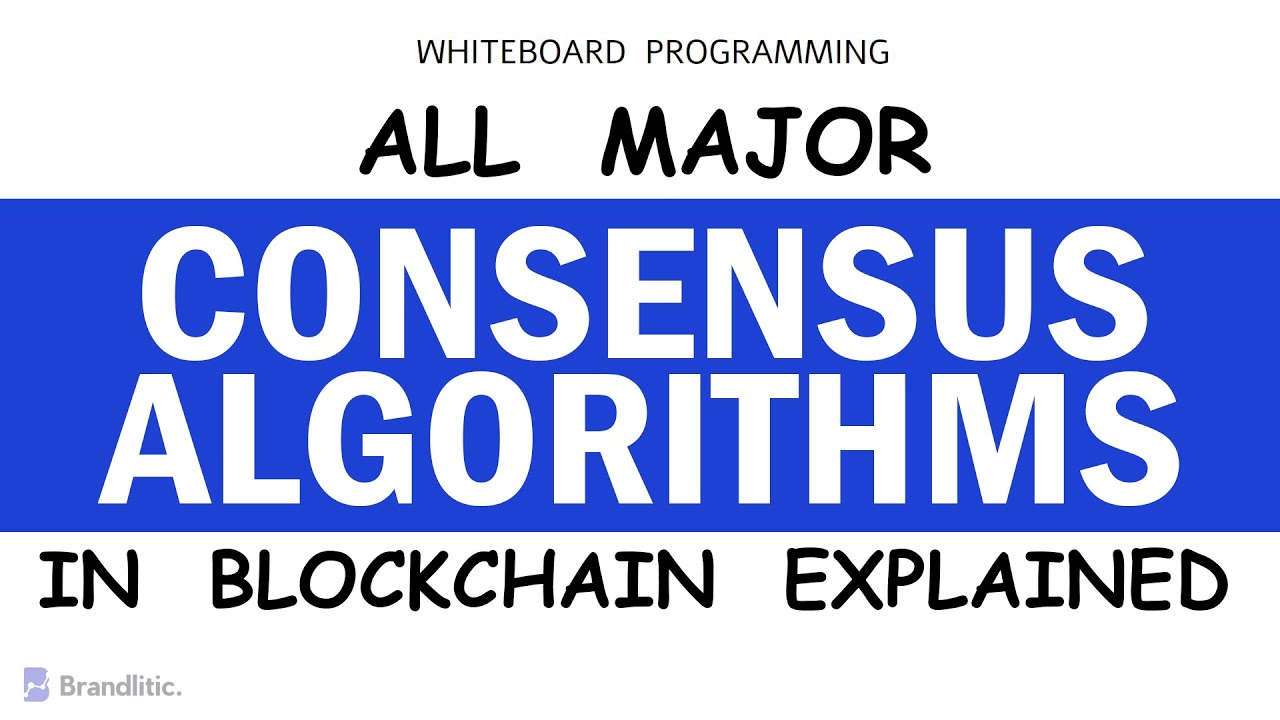Proof of WHAT?! Overview of 13 different consensus algorithms for cryptocurrencies!
Summary
TLDRIn this video, Kevin from Bitcoin for Beginners explores various blockchain consensus mechanisms beyond the well-known proof of work and proof of stake. He explains how these mechanisms enable agreement among participants in a decentralized network, ensuring the validity of the blockchain. The discussion covers notable approaches like delegated proof of stake, proof of authority, proof of capacity, and Byzantine fault tolerance, highlighting their unique characteristics, advantages, and challenges. This insightful overview emphasizes the importance of understanding these mechanisms as the crypto space evolves, especially during market fluctuations.
Takeaways
- 😀 Violence prevention is crucial in Mexico due to alarming levels of violence affecting countless lives.
- 💊 Drug trafficking and organized crime are significant contributors to violence in the country.
- 🏘️ Community-based initiatives focusing on education and social development play a crucial role in prevention.
- 🤝 Collaboration between government and local organizations is essential for effective violence prevention.
- 👦 Investment in youth programs can help divert attention from gangs and violence.
- 🧠 Mental health support is vital for individuals affected by violence.
- 🌍 International cooperation can enhance local efforts in combating violence.
- 🔍 Understanding the root causes of violence is key to developing effective solutions.
- 🚫 Preventive strategies should be prioritized over punitive measures in addressing violence.
- 📚 Education and community engagement can foster long-term change towards peace.
- 🤗 Every individual has a role to play in promoting peace and preventing violence.
Q & A
What are consensus mechanisms used for in blockchain networks?
-Consensus mechanisms are used to ensure that all participants in a blockchain network can agree on the state of the network, determining which blocks to add and ensuring the validity of the blockchain.
What is Proof of Work (PoW) and how does it function?
-Proof of Work is the first consensus algorithm that requires miners to solve complex puzzles to add new blocks to the blockchain. It is secure because it requires substantial computational resources, making it economically unviable for attackers to attempt a 51% attack.
How does Proof of Stake (PoS) differ from Proof of Work?
-Proof of Stake allows validators to create new blocks based on the number of coins they hold and are willing to stake, making it more energy-efficient than Proof of Work, which relies on computational power.
What are the potential drawbacks of Proof of Stake?
-One major issue with Proof of Stake is the 'nothing at stake' problem, where validators may vote on multiple chains without consequences, leading to difficulty in reaching consensus.
What is Delegated Proof of Stake (DPoS), and how does it work?
-In Delegated Proof of Stake, stakeholders elect delegates who validate transactions on their behalf. This system promotes collaboration but can lead to centralization, as large stakeholders can dominate the voting process.
What is the main principle behind Proof of Authority (PoA)?
-Proof of Authority relies on approved validators whose identities are known. They must maintain a good reputation to continue participating in the network, making it more centralized but potentially faster.
How does Proof of Capacity (PoC) improve upon Proof of Work?
-Proof of Capacity uses storage space instead of computational power to validate transactions, making it a greener option. Participants must allocate a certain amount of disk space to participate.
What challenges does Proof of Burn (PoB) face?
-Proof of Burn requires participants to send coins to an irrecoverable address to gain mining opportunities, which can be seen as wasteful, as it incentivizes the destruction of valuable assets.
What is the role of Byzantine Fault Tolerance in consensus mechanisms?
-Byzantine Fault Tolerance allows a network to achieve consensus even if some nodes fail or act maliciously. It enhances reliability and speed, especially in smaller networks.
What distinguishes Directed Acyclic Graphs (DAG) from traditional blockchain structures?
-DAGs allow transactions to be confirmed in parallel rather than sequentially, improving scalability and efficiency in processing transactions.
Outlines

Cette section est réservée aux utilisateurs payants. Améliorez votre compte pour accéder à cette section.
Améliorer maintenantMindmap

Cette section est réservée aux utilisateurs payants. Améliorez votre compte pour accéder à cette section.
Améliorer maintenantKeywords

Cette section est réservée aux utilisateurs payants. Améliorez votre compte pour accéder à cette section.
Améliorer maintenantHighlights

Cette section est réservée aux utilisateurs payants. Améliorez votre compte pour accéder à cette section.
Améliorer maintenantTranscripts

Cette section est réservée aux utilisateurs payants. Améliorez votre compte pour accéder à cette section.
Améliorer maintenantVoir Plus de Vidéos Connexes

Programming on Solana - Introduction to Blockchains and Bitcoin

Apa itu Blockchain?

All Major Blockchain Consensus Algorithms Explained | Consensus Mechanism in Blockchain

Proof of Work vs Proof of Stake: What's Better? | 3-min crypto

Pengenalan Blockchain Technology di Balik Cryptocurrency

What is Proof of Work? (Cryptocurrency Explanation)
5.0 / 5 (0 votes)
